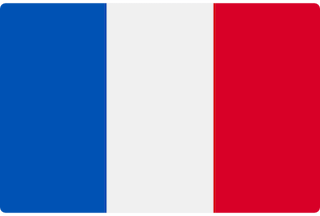History of Israel
Tel Aviv - Yaffo |
|
Population: 500.000 With its casual atmosphere, warm beaches, and outdoor cafes, Tel Aviv is by far the most sophisticated of Israel's cities. The character of this city is opposed to Jerusalem in various ways; despite a distance of 45 minutes, they are separated by 2,000 years. Jerusalem is timeless, a city of golden stone and past history. Tel Aviv, emancipated, is the place where people go to do business, shop, have fun and is rightly considered 'THE trendy city' at the moment. It's the hub of finance, fashion, media, trade and undeniably the cultural capital. When Jerusalem sleeps for the night, Tel Aviv is just starting to warm up. Like Manhattan and London, a tourist in Tel Aviv feels 'in the right place at the right time'. It's nicknamed the city that never stops. Today Tel Aviv has a population of about 360,000 people, only in Tel Aviv and Yafo (Jaffa). Including the surrounding cities of Ramat Gan, Holon, and others, the total population reaches over one and a half million. This makes Tel Aviv the largest urban area in Israel by far. Tel Aviv, benefiting from a warm and humid climate, is almost entirely lined with its beaches, has numerous hotels, and is an important tourist center. The municipality is divided into two distinct centers: historic Jaffa to the south, and modern Tel Aviv extending to the north and east. Jaffa (ancient Joppa) is an old Arab city with old buildings and winding streets. Tel Aviv has wide avenues lined with trees and modern buildings. Tel Yafo Yafo is an important center of Israeli cultural life. It consists of several museums, music and arts centers; it hosts the Israel Philharmonic Orchestra and other artistic groups. The Histadrut (General Federation of Labor) and the Ministry of Defense have their headquarters in Tel Aviv. Tel Aviv (in French "hill of spring") was established by Jewish settlers in 1909 on a sand dune near Jaffa, the contiguous city with which it merged in 1950. Jaffa (meaning "beautiful") is an ancient and venerable city mentioned in the Old and New Testaments. The location of Jaffa, a small promontory jutting out over the sea, has been occupied for nearly 4,000 years. In antiquity, it was besieged by the Egyptians, Persians, and Greeks. It was destroyed by the Romans during the Jewish war in 68 BC. Then, Jaffa was invaded twice by the Crusaders in 1126 and 1191 and twice reconquered by the Muslims. The late King Solomon used this port to bring the cedars of Lebanon used in the construction of the great temple in Jerusalem. Although King Herod built Caesarea to replace Jaffa as the main port, Jaffa remained very actively used by the Muslims and Crusaders. The city died out until the 19th century, when it began to develop in volume and affluence. The Jews then decided to leave Jaffa and its lively surroundings to create a suburb that would become Tel Aviv. They bought the uninhabited north and formed an association called "Ahuzat Bayit". It's amusing today to think that the founders of Tel Aviv were once prohibited from undertaking any commercial activity in this city. This prohibition, naturally, did not last long; the city made enormous commercial progress and by 1921 it became the first modern Jewish city in the world. By 1924, Tel Aviv had a respectable population of 35,000 souls, which would grow and reach 200,000 souls by 1948. One of the most significant moments in modern history was when David Ben-Gurion proclaimed the state of Israel on May 14, 1948, in the house of Mayor Meir Dizengoff. From May to December 1948, during the Arab blockade of Jerusalem, it also served as the de facto provisional capital. Although Israel later designated Jerusalem as the capital, this decision was considered by some countries as a violation of international law. This includes international state organizations, all of which continue to consider Tel Aviv as the capital of Israel. Many countries, however, maintained their embassies in Jerusalem until the early 1980s, when the Knesset passed the Basic Law that declared Jerusalem as the indivisible capital of Israel. This eventually led to most embassies moving out of Jerusalem to other Israeli cities (among them Tel-Aviv). In July 2003, Tel Aviv was unanimously elected by UNESCO as a world historical monument, claiming the largest number of Bauhaus buildings in the world (2500). |


 Faire son crédit en FRANCE ?
Faire son crédit en FRANCE ? Faire son crédit en ISRAËL ?
Faire son crédit en ISRAËL ?



